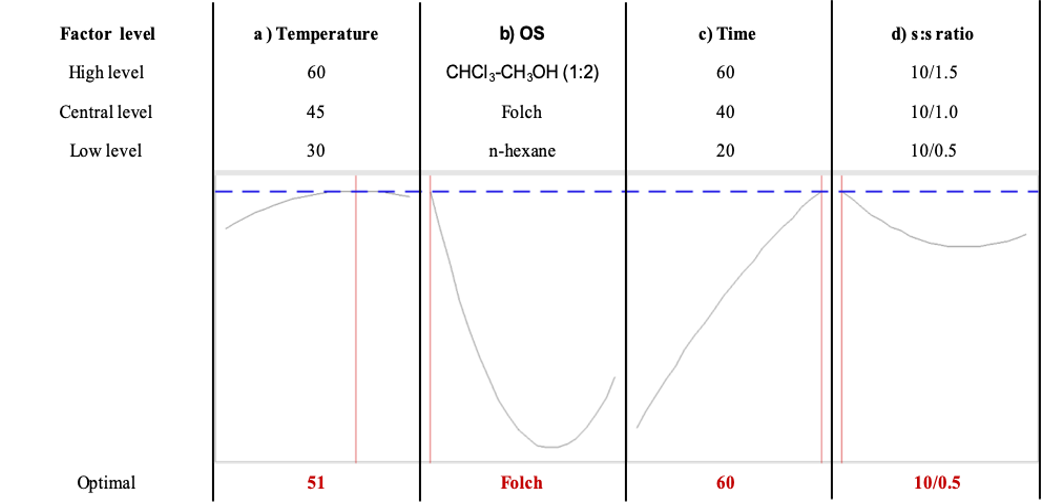 |
|
Cotton (Gossypium hirsutum L.) is an important fibre crop of global significance. It is mainly utilised for the textile industry, and its seeds as cattle feed and to re-harvest fields. However, an important amount of the cottonseed obtained during processing is discarded. Some reports indicate that cottonseed contains high-quality protein and important lipid content. The aim of the present study was to compare different extraction methods (Soxhlet, mechanical and ultrasound-assisted) in order to achieve the highest extraction yield of cottonseed oil (CSO). The extraction efficiency was measured based on the effects of temperature, organic solvent (OS), extraction time and solvent:seed (s:s) ratio, using a Box-Behnken 34 experimental design. From our results, ultrasound-assisted extraction had the highest extraction yield (38.25%) at 45 oC, after 1 h for a 10:1 ratio using Folch mixture as OS. Palmitic, oleic and linoleic acids were the main residues in the characterised CSO, and this oil can be utilized for biodiesel production. This research intends to promote the use of this agroindustrial by-product to add value to cottonseed.
Keywords: cottonseed, oil, extraction, characterisation.
|
|
 |

